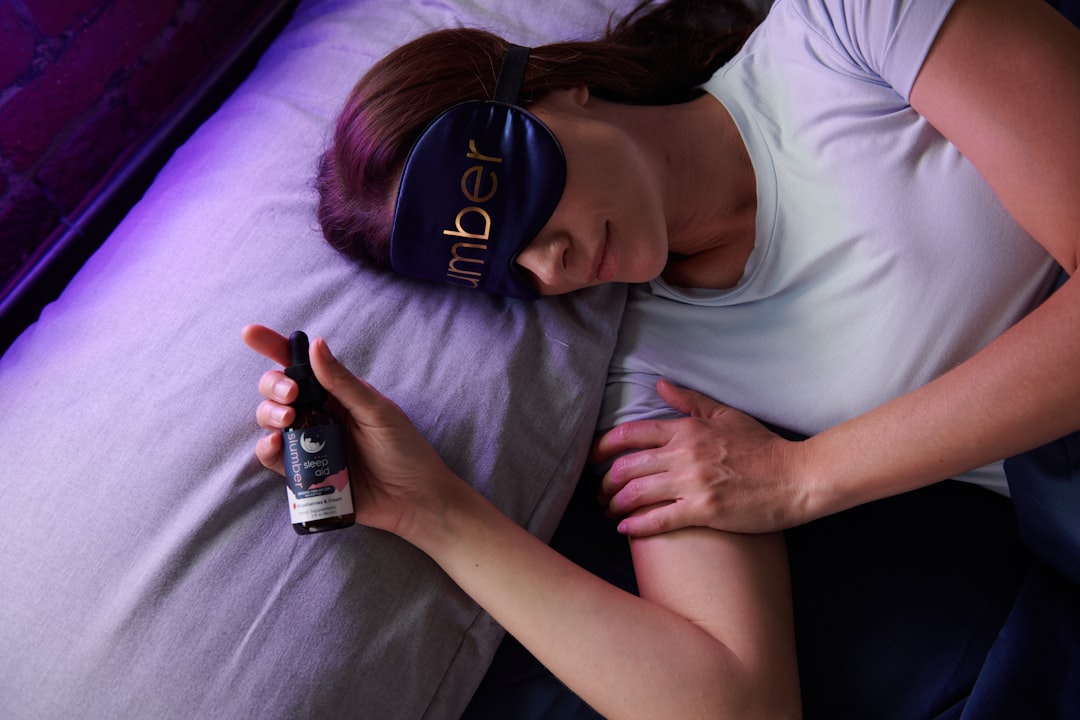Beyond the Pill: How Targeted Diversification is Shaping the Future of Sleep Aid Patches
Introduction: The Quiet Revolution in Sleep Wellness
In a world that never truly sleeps, the quest for a good night's rest has become a top priority for millions. The sleep aid market, once dominated by traditional pills and supplements, is undergoing a significant transformation. Consumers are increasingly seeking solutions that are not only effective but also convenient, non-invasive, and tailored to their specific lifestyles. Enter the sleep aid patch—a prime example of how product diversification and targeted applications are reshaping an entire industry.
This article explores the strategic shift from one-size-fits-all sleep solutions to a diversified portfolio of targeted products, using the sleep aid patch as our central case study. We will analyze how companies are leveraging this strategy to meet a wider range of customer needs, reduce dependency on single product lines, and build stronger, more resilient brands.

1. What Are Sleep Aid Patches and How Do They Work?
Before diving into market strategy, it's crucial to understand the product itself. A sleep aid patch is a transdermal patch that delivers sleep-promoting ingredients through the skin directly into the bloodstream. This method bypasses the digestive system, allowing for a steady, controlled release of active ingredients throughout the night. Common ingredients include melatonin, valerian root, hops, passionflower, and increasingly, CBD.
This delivery system represents a form of product innovation designed to offer a distinct advantage over oral supplements, which can cause morning grogginess due to inconsistent absorption rates.
2. The Core Strategy: Product Diversification in the Wellness Market
Product diversification is a growth strategy where a company expands its offerings beyond its current products. Businesses do this to reduce risk, expand into new markets, and increase revenue streams. In the wellness industry, a brand known for melatonin pills might practice concentric diversification by launching a melatonin patch. This strategy leverages existing expertise (sleep science) and brand trust to enter a new product category that caters to a similar customer base.
Examples from other industries, like Apple expanding from computers to iPhones or Amazon from books to a global marketplace, show the power of this approach.
3. Targeted Applications: Identifying Niche Markets for Sleep Patches
Effective diversification isn't just about creating new products; it's about creating them for specific audiences. This is where 'targeted applications' come in. Instead of marketing to a general audience with 'trouble sleeping,' smart brands are segmenting the market based on lifestyle, needs, and psychographics.
Key target segments for sleep patches include:
- Frequent Travelers: To combat jet lag and unfamiliar sleeping environments.
- Individuals with Dysphagia: People who have difficulty swallowing pills.
- Shift Workers: To help regulate inconsistent sleep schedules.
- The 'Bio-Hacker' Community: Users interested in optimizing sleep with controlled-release formulas.
- Wellness Enthusiasts: Those seeking natural, non-habit-forming sleep aids.
4. Expanding the Product Line: A Portfolio of Patches
True diversification involves creating a varied product line within the patch category itself. This allows a brand to cater to even more specific needs and preferences. A company could offer:
- Formula variations: Patches with different key ingredients (e.g., Melatonin-Free, Extra Strength, CBD-infused).
- Release-time variations: Patches designed for short-term naps vs. all-night sleep (e.g., 4-hour vs. 8-hour release).
- Sizing and Repricing: Offering travel-sized packs or bulk-buy discounts to appeal to different purchasing habits.
5. Building Trust and Authority (E-E-A-T) in a New Market
With any new product, especially in the health and wellness space, building trust is paramount. Google's E-E-A-T (Experience, Expertise, Authoritativeness, Trustworthiness) principles provide a framework for this.
- Expertise: Clearly explain the science behind transdermal delivery. Provide detailed information on each ingredient and its function.
- Authoritativeness: Feature testimonials from sleep experts or cite relevant studies on ingredient efficacy.
- Trustworthiness: Be transparent about manufacturing processes, ingredient sourcing, and third-party testing. Offer a clear satisfaction guarantee.
6. Competitive Landscape: Comparing Sleep Aid Solutions
To effectively market a diversified product, it's essential to understand its place in the broader market. A comparative analysis highlights the unique selling proposition of sleep patches.
| Sleep Aid Type | Delivery Speed | Duration of Effect | Convenience | Potential Side Effects |
|---|---|---|---|---|
| Oral Pills | Slow (30-90 mins) | Variable | Moderate | Digestive issues, grogginess |
| Sleep Patches | Steady, Continuous | Long (e.g., 8 hours) | High (Apply and forget) | Skin irritation (rare) |
| Gummies/Chewables | Moderate (20-60 mins) | Variable | High | Sugars, inconsistent dosage |
| Teas/Drinks | Moderate | Short | Low (Requires prep) | Frequent urination |
| Sprays (Oral/Nasal) | Fast | Short to moderate | High | Unpleasant taste, nasal dryness |
This table clearly positions patches as a superior option for those seeking long-lasting, steady support without the drawbacks of ingested methods.
7. Horizontal Diversification: Building a Sleep Ecosystem
An ambitious brand won't stop at patches. The next strategic move is horizontal diversification, which involves offering new, unrelated or semi-related products to the same customer base. A successful sleep patch brand could leverage its customer trust to launch:
- Aromatherapy diffusers with calming essential oils.
- Weighted blankets.
- Blue-light-blocking glasses.
- Meditation and sleep story apps.
This transforms the company from a product seller into a holistic 'sleep wellness' brand, much like how beverage companies expanded into snacks and other drinks.
8. Analyzing and Mitigating Risks
Diversification is not without risks. For sleep patches, potential challenges include:
- Market Education: Consumers may not understand or trust a new delivery system.
- Operational Strain: Managing multiple product formulations and supply chains can be complex.
- Brand Dilution: A failed product launch could damage the reputation of the core brand.
Mitigation involves thorough market research, starting with a limited product line, gathering customer feedback, and maintaining a strong focus on quality control.
9. Marketing a Diversified Product Line
A diversified product line requires a multi-faceted marketing strategy. Paid social media ads can target specific demographics (e.g., travelers on Instagram), while content marketing (blog posts, videos) can educate the broader audience about the benefits of transdermal technology. Collaborating with wellness influencers to review different patch formulations can provide authentic social proof and build credibility.

10. The Future of Targeted Sleep Technology
The strategy of targeted diversification is still in its early stages. The future likely holds even more personalized solutions. We may see:
- Smart Patches: Patches that monitor sleep cycles and adjust ingredient delivery in real-time.
- Subscription Models: Customized monthly boxes with a variety of patches based on the user's reported sleep patterns.
- Integrated Solutions: Bundles that include patches, a sleep-tracking app, and online coaching.
Conclusion: A Strategic Awakening
The rise of the sleep aid patch is more than just product innovation; it is a masterclass in modern business strategy. By applying the principles of product diversification and targeted applications, wellness companies are moving away from a mass-market approach and toward a more personalized, effective, and user-centric model. For consumers, this strategic shift means more choice, better solutions, and hopefully, a better night's sleep. For businesses, it demonstrates a clear path to sustainable growth by identifying and serving the nuanced needs of a diverse customer base.
